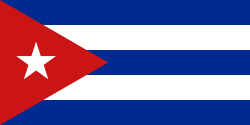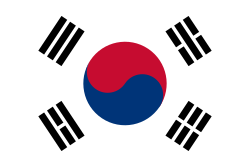Ahn Byeong-keun
| Koreanische Schreibweise | |
|---|---|
| Hangeul | 안병근 |
| Hanja | 安柄根 |
| Revidierte Romanisierung | An Byeong-geun |
| McCune- Reischauer | An Byŏng-kŭn |
Ahn Byeong-keun (* 23. Februar 1962) ist ein ehemaliger südkoreanischer Judoka. Er war 1984 Olympiasieger und 1985 Weltmeister im Leichtgewicht.
Der 1,72 m große Ahn Byeong-keun besiegte im Viertelfinale der Olympischen Spiele 1984 in Los Angeles den Japaner Hidetoshi Nakanishi und im Halbfinale den Briten Kerrith Brown. Im Finale bezwang er den italienischen Olympiasieger von 1980 Ezio Gamba in einem Kampf über sieben Minuten mit einer Koka-Wertung.[1] Bei den Weltmeisterschaften 1985 in Seoul besiegte Ahn Byeong-keun im Viertelfinale den Japaner Takahiro Nishida, im Halbfinale gewann er gegen Steffen Stranz aus der Bundesrepublik Deutschland. Im Finale bezwang er Mike Swain aus den Vereinigten Staaten.[2] Ein Jahr nach den Weltmeisterschaften fanden auch die Asienspiele 1986 in Seoul statt. Ahn Byeong-keun besiegte im Finale den Japaner Yukiharu Yoshitaka.[3]
1988 trat Ahn Byeong-keun nicht mehr im Leichtgewicht, sondern im Halbmittelgewicht an. In dieser Gewichtsklasse gewann er im März 1988 den Hungaria Cup in Budapest. Bei den Olympischen Spielen 1988 in Seoul gewann der Südkoreaner seinen ersten Kampf gegen den Belgier Johan Laats durch Ippon. In seinem zweiten Kampf schied er gegen den Kanadier Kevin Doherty aus.[4]
Weblinks
- Turnierergebnisse bei judoinside.com
- Ahn Byeong-keun in der Datenbank von Olympedia.org (englisch)
Fußnoten
- ↑ Volker Kluge: Olympische Sommerspiele. Die Chronik III. Mexiko-Stadt 1968 – Los Angeles 1984. Sportverlag Berlin, Berlin 2000, ISBN 3-328-00741-5. S. 953
- ↑ Kampfbilanz bei judoinside.com
- ↑ Asienspiele 1986 bei judoinside.com
- ↑ Volker Kluge: Olympische Sommerspiele. Die Chronik IV. Seoul 1988 – Atlanta 1996. Sportverlag Berlin, Berlin 2002, ISBN 3-328-00830-6. S. 107
| Personendaten | |
|---|---|
| NAME | Ahn, Byeong-keun |
| ALTERNATIVNAMEN | 안병근 (Hangeul) |
| KURZBESCHREIBUNG | südkoreanischer Judoka |
| GEBURTSDATUM | 23. Februar 1962 |
Auf dieser Seite verwendete Medien
Olympic Rings without "rims" (gaps between the rings), As used, eg. in the logos of the 2008 and 2016 Olympics. The colour scheme applied here was specified in 2023 guidelines.
Olympic Rings without "rims" (gaps between the rings), As used, eg. in the logos of the 2008 and 2016 Olympics. The colour scheme applied here was specified in 2023 guidelines.
Variant version of a flag of Japan, used between January 27, 1870 and August 13, 1999 (aspect ratio 7:10).
Variant version of a flag of Japan, used between January 27, 1870 and August 13, 1999 (aspect ratio 7:10).
Flag of Italy from 1946 to 2003, when exact colors were specified.
Flag of South Korea from 21 February 1984 to 15 October 1997, when the exact colors were specified into their shades.
Pictograms of Olympic sports - Judo. This is unofficial sample picture. Images of official Olympic pictograms for the 1948 Summer Olympics and all Summer Olympics since 1964 can be found in corresponding Official Reports.
The Korean characters "한국어, 조선말" meaning Korean, made using the GungsuhChe truetype font
Flag of South Korea from October 1997 to May 2011. In May 2011, the exact colors were specified into their current shades.











